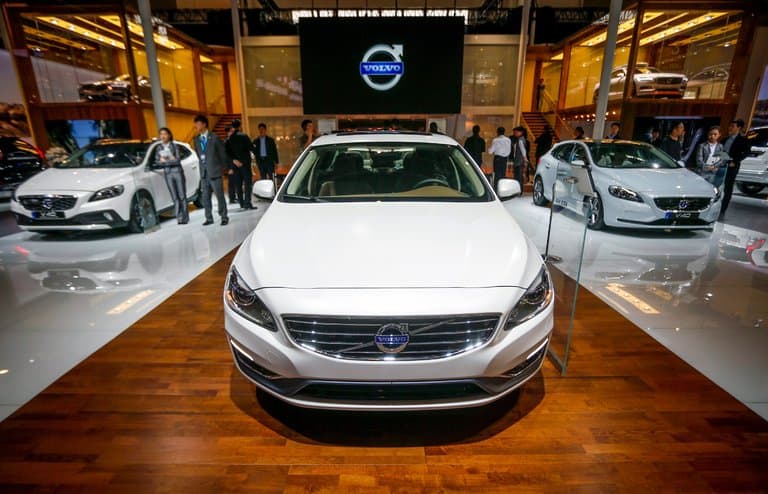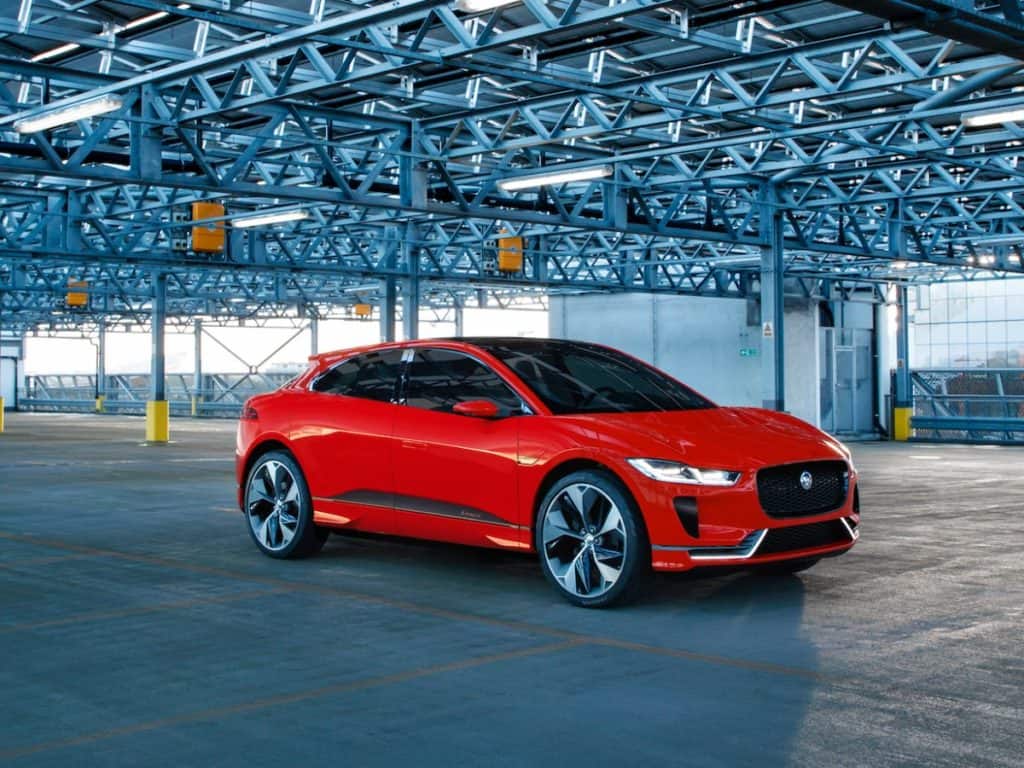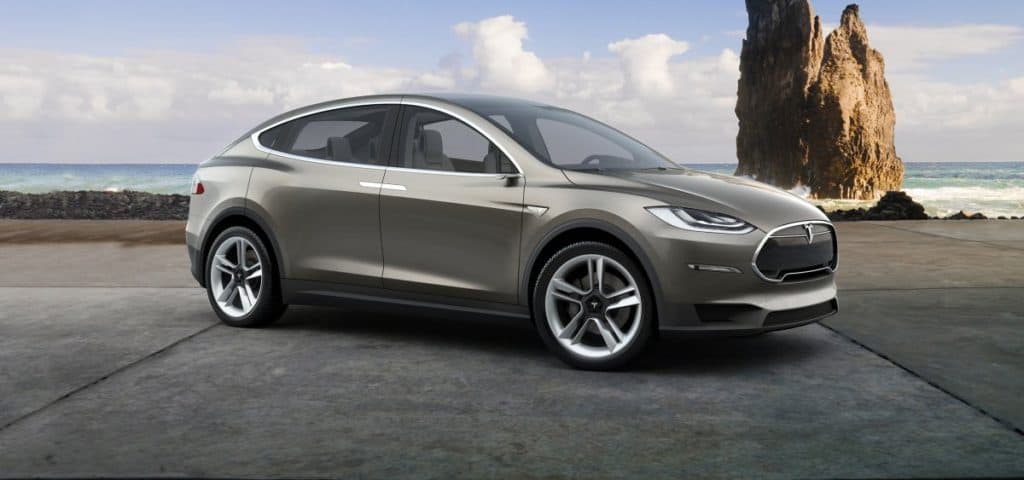In a few minutes, we talk about Volvo, Tesla, Jaguar, but now, let’s talk about a Big Red Car.
Big Red Car here on a post 4th of July let down. Ahhh, the Fourth was great!
So, comes now Volvo with the announcement that the internal combustion engine is dead and it is going to phase them out completely by 2019 whereafter every Volvo will be either a hyrbid or an electric car.
Hello, America!
Volvo? Big Red Car, Volvo?
Yes, Volvo which produced and sold 534,332 cars worldwide (Europe, USA, China) in 2016. Volvo had record sales in 20167, and sold:
1. China, 90,930 units
2. USA, 82,726 units
The Volvo SUVs and their premium sedan led sales.
Volvo is currently building a $500MM production plant in Charleston, South Carolina.
Volvo is owned by a Chinese company, Zhejiang Geely Holding (Geely Holding) since 2010. The company has announced a strategy of developing a worldwide manufacturing and distribution hub in China operating from at least three plant sites. This is a big move and will allow the company to reap the benefits of improved labor costs and first time technology implementation [You listening, Detroit?]
Volvo is working hard on AD (autonomous driving, with Uber) and ADAS (advanced driver assistance systems, with Zenuity). They will be conducting tests in Sweden, London, and China before the end of 2017.
Read about Volvo’s plans here: Volvo Announcement
Tesla
Tesla, whose stock today took a tumble of more than 7% and is down twice that amount since a May high, is in that business — electric cars.
Tesla delivered 47,000 units in the first half of 2017 which puts them at about the same size as Volvo in the US if they can do the same in the second half of the year — US production and sales only, mind you. Not worldwide where Volvo is six times as big.
Tesla also announced it is ready to roll its Model 3 ($35,000 Everyman’s car v $70,000 + Not Everyman’s luxury units) off the production lines with 100 units in September building to 20,000 units in December. They have a considerable backlog (400,000 units with a $1,000 deposit to be called an “order”) of orders, so these cars are sort of, but not really, sold.
Tesla has a checkered history of failing to hit its own production targets which y’all can read about elsewhere. Tesla acquired another pet company of its founder, Elon Musk. Solar City was folded into Tesla which, with its debt, makes for an interesting conversation.
Tesla has a huge investment in its battery making at a time when that technology is developing rapidly. Scan for what’s going on over at Fisker with graphene?
Jaguar
So, comes now, Jaguar with its own new electric SUV. It is a luxurious beastie and will compete head-to-head with the Tesla Model X SUV.
The Jaguar SUV is competing against this bad boy:
All of this brings me to this point. Tesla has been enjoying a rarefied valuation. Is it justified and is it sustainable?
NO, sayeth the Big Red Car.
1. Tesla is a little company and yet it has a market cap larger than the largest American car companies while producing less than 100,000 units annually v the 3,000,000 + each of the big boys.
2. Tesla is hopelessly distracted by its business and Solar City. This while they are building battery and car plants.
3. The competition is building, witness Volvo and Jaguar. These competitors are sophisticated, luxurious, and well financed. Tesla will have to seek funds in the next year.
4. This is going to get real interesting.
But, hey, what the Hell do I really know anyway? I’m just a Big Red Car, y’all! Good luck to all and be kind to yourself. You earned it.![]()





Tesla is the great looking date that spent a tone of money on pre prom dress, makeup, and limo ride. Walked in and everyone wanted to dance with. Then the other girls show up in the same dress but you know them and they are not Psycho, have great families and enjoy more than one activity the next day.
Having driven the Tesla S and enjoyed the rapid acceleration it was fun. That said My Jaguar F type rag top has the best feature in any automobile. A STICK SHIFT! Engines beat motors for pure fun every day!
.
Excellent analogy!
Tesla’s first mover advantage is about to disappear. When Volvo, Jaguar, and the big boys are in the same game, it will be difficult for Tesla to create and sustain any meaningful advantages.
This is how capitalism works.
In the end, the consumer will reap the benefit.
Well played.
BRC
https://www.themusingsofthebigredcar.com
This is going to be SO interesting. Thanks for bringing up Volvo into the equation. Missed that one. Not sure quite how the combustion engine is so dead if still employed as a hybrid.
Musk is one hugely crowded trade IMHO. Call me shocked if it does not unwind big time.
The TSLA liquidation today pretty standard procedure for a momo stock off of highs, but…
Post weak longs puke and support comes in? Or to $200 range we go?
I read a piece about the $35k model 3 “car for everyone” and had a huge laugh.
.
It is hard to imagine how the first mover and darling stock advantage lasts much longer. Time to get out.
BRC
https://www.themusingsofthebigredcar.com
I can see maybe a future for hybreds where an internal combustion engine charges a battery. The brakes also charge that battery. And the battery drives electric motors that drive the wheels.
So, get to use a smaller internal combustion engine than the 200-400 HP people like now.
If on average over time, the car needs, say, 80 HP, then have an 80 HP internal combustion engine and run it nearly all the time. Then, maybe that engine will produce the 80 HP for less fuel than the 200-400 HP engines.
But the 80 HP engine has to turn an electric generator, which has to charge a battery, which has to discharge to drive the electric motors, which have to turn to drive the wheels, so from the 80 HP engine that’s 4 conversions from mechanical to electrical, to electric storage, from electric storage, from electric to mechanical again. None of those four conversions will be 100% efficient. E.g., to charge a battery, have to push current through the battery, and there is some internal resistance which will heat the battery. Similarly when discharge the battery.
That stands to be a lot of battery charging and discharging and, thus, some question about the lifetime of the battery. How often are we talking replacing the battery pack?
Under some circumstances, there will be a severe concern about that 80 HP internal combustion engine: Or, for and SUV and a family vacation, in hot weather, to visit Grandma on the other side of some mountains. So, load everyone into the SUV, with all the luggage, gifts, toys, attach the boat to the trailer hitch, and head out.
Then time to climb some hills, with the big load, with the big SUV, the high frontal area and drag coefficient, the high weight, the AC running full blast, the trailer, at 70 MPH, up the hills and mountains. Sorry, guys, the 80 HP won’t cut it, and soon the battery will be out of charge. So, pull off the road and let the little 80 HP motor charge the battery while running the AC, and then try to attack the hills again.
Soon that family will want a classic American 400 cubic inch V-8 and to heck with the battery.
Okay, maybe per HP, the 400 cubic inch V-8 at full throttle will be as efficient as the 80 HP engine at full throttle. So, f’get about the 80 HP engine and have the 400 cubic inch V-8. Then when charge the battery, run the engine at its most efficient, say, 300 HP. Then notice that need a 300 HP generator. Already did need 300 HP of electric motors for the wheels. So, net, we’ve got a 400 cubic inch engine again. We’ve gotten rid of the transmission but we have a battery, a 300 HP electric generator, and some electric motors that total 300HP.
Sure, if most of the driving is just put-put at low speeds, then the 400 cubic inch engine doesn’t run very often and maybe save some gasoline.
So, our great SUV is good for put-put but is not up to the vacation visit to grandmas or even fast Interstate driving where, again, the 80 HP is, on average, not power enough for the AC, frontal area, drag coefficient, weight, and hill climbing.
There might be a way out: For the 300 HP engine, have a ceramic gas turbine instead of a 400 cubic inch V-8. That might be enough more efficient at 300 HP than the V-8 to get enough gas savings to be interesting. But, I doubt it.
Now, in an SUV, a 400 cubic inch V-8 piston engine with computer controlled direct fuel injection and ignition with a computer controlled 8 speed transmission is going to be tough to beat.
For all electric, I see the charging time as just too darned long. Even if have charging stations with 10 MW power, the heat from fast charging from the internal resistance of the battery will be an issue. And, only a small fraction of customers will want to replace the big battery pack after only a few thousand charges.
My guess: The Al Gore CO2 and global warming nonsense hysteria, attack on fossil fuels, and big US Federal Government subsidies for wind and solar energy and electric cars have apparently convinced a lot of people to continue on with the attack on gasoline powered cars. But IMHO, the Federal subsidies are over with. Then so is the hysteria. Then so is nearly all the market for all electric or hybrid electric SUVs. Electric pregnant roller skates and golf carts? Fine. SUVs? No.
To me, Volvo, Jaguar, and Tesla are on a long walk on a short pier. Once this nonsense about hybrids and all-electric have finally died down, Volvo and Jaguar can return to large piston engines. But, for Tesla, I see nothing but down, down, down and out. That is, maybe Tesla can hold on by going into the golf cart business.
In the US, we know what SUVs are used for: (1) Commuting at high speed, often on Interstate highways. (2) Shopping, loading up the back with groceries, clothes, luggage, toys, gifts, sports equipment, maybe laundry. (3) Vacations. Some charging through snow, pulling a trailer or boat, off road travel, carrying a crowd, etc. The SUVs are versatile; just put-put around the local village is not nearly the only important use.
Net, there is only one important reason for getting rid of the 400 cubic inch, 300 HP V-8 engine in an SUV — fuel economy. But an SUV will never be really low energy due to its frontal area, drag coefficient, weight, HVAC, and common uses. The possible fuel savings just are not worth the additional botheration; gasoline just is not that expensive.
.
Batteries are the big agent of change. Few folks are going to want a vehicle which goes 300 miles and then is down for half a day. Fisker Auto has a new wrinkle with graphene.
BRC
https://www.themusingsofthebigredcar.com
.
So, Volvo, Tesla, Jaguar are all going all in on electric cars?
https://themusingsofthebigredcar.com/volvo-v-tesla/
Read about it here.
BRC
https://www.themusingsofthebigredcar.com